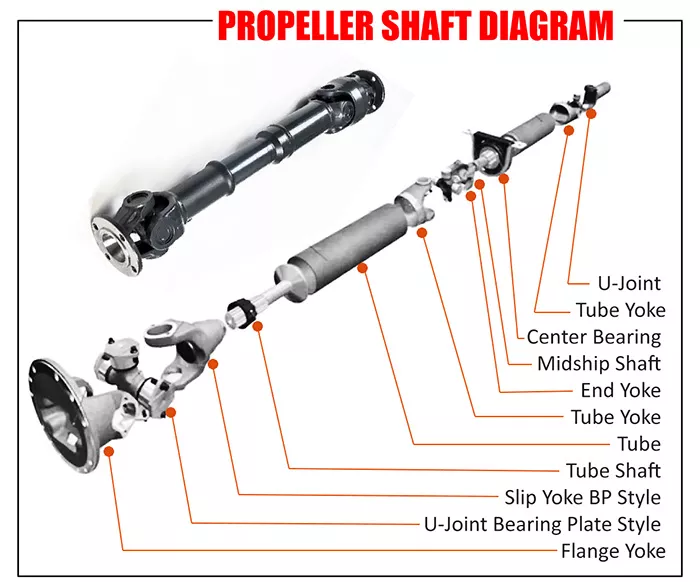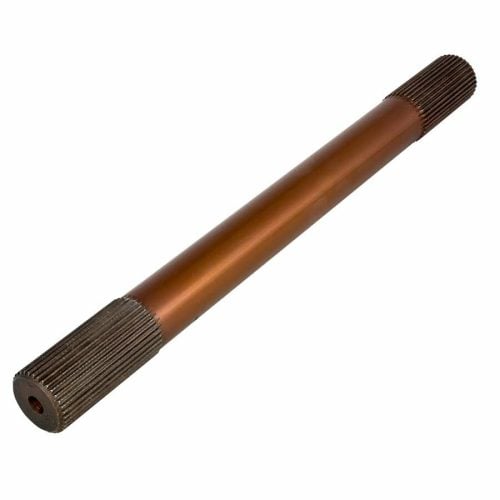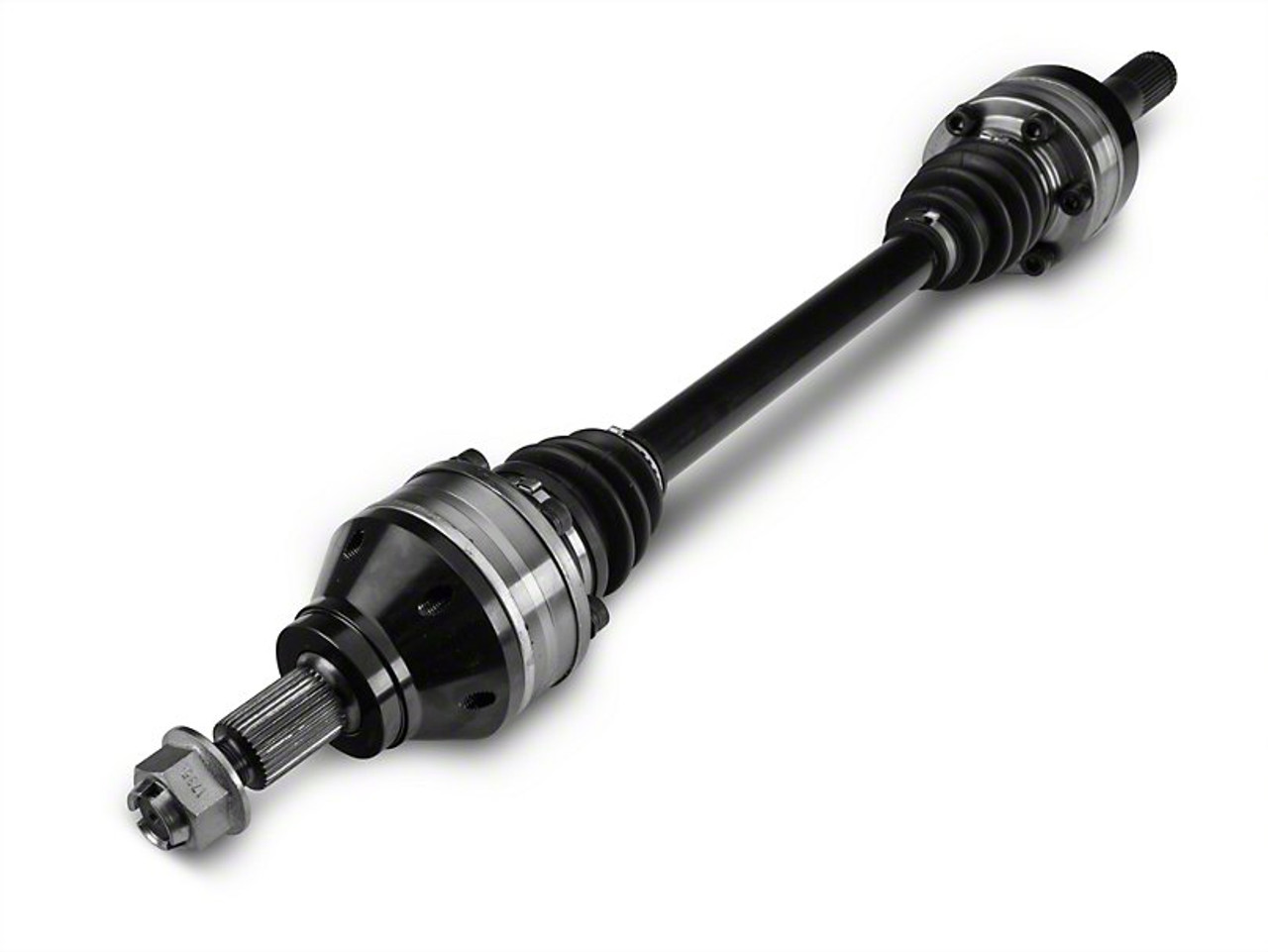←
Automobile Engineering
Transmission Driveline- Propshafts And Driveshafts
The transmission driveline in a vehicle is a critical system that transfers power from the engine to the wheels, enabling movement. Two key components in this system are the propshafts (propeller shafts) and driveshafts. Here's a detailed look at each:
1. Propshafts (Propeller Shafts):
Function:
- The propshaft, commonly known as the propeller shaft, is primarily used in rear-wheel-drive (RWD) and four-wheel-drive (4WD) vehicles.
- It transmits torque from the transmission (or transfer case in 4WD vehicles) to the differential, which then distributes this torque to the drive wheels.
Components:
- Shaft: The main body of the propshaft, typically a tubular structure made of steel, aluminum, or carbon fiber for strength and lightweight properties.
- Universal Joints (U-Joints): Located at each end of the propshaft, these joints allow for flexibility and rotation between the transmission/transfer case and the differential, accommodating any misalignment due to movement in the suspension.
- Slip Yoke: Allows the propshaft to change length as the suspension moves, preventing damage by accommodating the changing distance between the transmission and differential.
- Center Bearing (in multi-piece propshafts): Supports the shaft in the middle, allowing for longer shafts in vehicles where a single piece would be too long and prone to vibration.
Types:
-
Single-Piece Propshaft: Used in vehicles where the distance between the transmission and differential is relatively short.

-
Two-Piece (or Multi-Piece) Propshaft: Used in vehicles with a longer wheelbase, this design includes a center support bearing to reduce vibrations and allow for greater flexibility.

Operation:
- The propshaft rotates at high speeds, transmitting engine torque through the U-joints and slip yoke to the differential. It must be perfectly balanced to avoid vibrations that could lead to premature wear or failure.
2. Driveshafts:
Function:
- The term "driveshaft" is often used interchangeably with propshaft, but in a technical context, driveshafts specifically refer to the shafts that connect the differential to the drive wheels.
- In front-wheel-drive (FWD) vehicles, the driveshafts connect the transaxle (combined transmission and differential) directly to the front wheels.
- In all-wheel-drive (AWD) and 4WD vehicles, driveshafts are used to transmit power from the differentials to all four wheels.
Components:
- Shaft: A solid or tubular rod that transmits torque to the wheels. Driveshafts are typically shorter than propshafts and often come in pairs for each axle.
- Constant Velocity Joints (CV Joints): Unlike U-joints, CV joints maintain a constant rotational speed regardless of the angle, which is crucial for vehicles with independent suspension and those that need to transmit power through sharp angles.
- Outer CV Joint: Connects to the wheel hub and allows for steering movement in FWD vehicles.
- Inner CV Joint: Connects to the differential or transaxle, allowing for suspension movement.
Types:
- Solid Driveshaft: Typically used in older vehicles or those with simpler driveline setups.

- Hollow Driveshaft: Modern vehicles often use hollow driveshafts to reduce weight while maintaining strength.

- Half-Shafts: These are the driveshafts in FWD vehicles, connecting the transaxle to the front wheels.

Operation:
- Driveshafts must be able to accommodate the vertical and lateral movement of the suspension while still transmitting power efficiently to the wheels. The CV joints at each end of the driveshaft allow for the necessary flexibility without losing power or causing vibrations.
Applications:
- RWD Vehicles: Propshafts transmit power from the front-mounted transmission to the rear differential, where driveshafts then transmit power to the rear wheels.
- FWD Vehicles: The transaxle drives the front wheels directly through driveshafts equipped with CV joints.
- AWD and 4WD Vehicles: Both propshafts and driveshafts are used to transmit power from the engine to all four wheels, with a more complex setup involving multiple differentials and transfer cases.
Maintenance Considerations:
- Balancing: Both propshafts and driveshafts need to be precisely balanced to avoid vibrations that could damage other drivetrain components.
- U-Joints and CV Joints: Regular inspection and maintenance are crucial, as worn joints can lead to driveline failure.
- Lubrication: Joints and slip yokes often require periodic lubrication to prevent wear and ensure smooth operation.
Summary:
- Propshafts are used primarily in RWD and 4WD systems to transmit power from the transmission to the differential.
- Driveshafts transmit power from the differential to the wheels in both FWD and AWD systems.
These components work together to ensure that the power generated by the engine is effectively transmitted to the wheels, allowing the vehicle to move smoothly and efficiently.